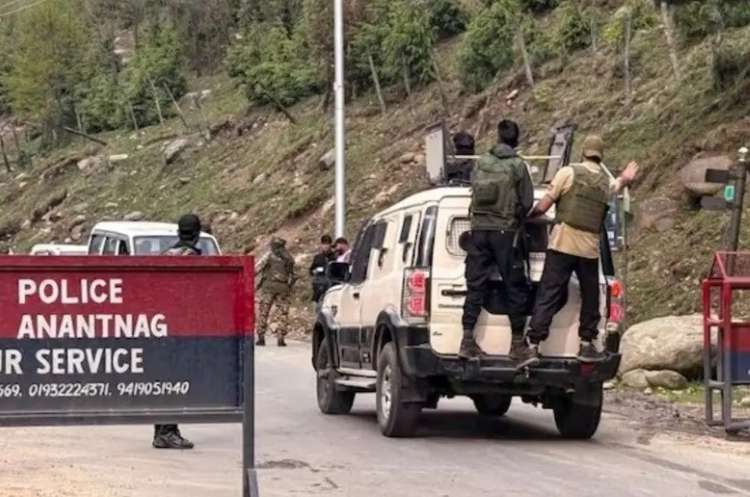
The Pahalgam terror attack, which killed 26 people including one Nepali tourist, has pushed Kashmir back into the centre of South Asia’s unresolved tensions. The incident, claimed by The Resistance Front, a proxy of Pakistan-based Lashkar-e-Taiba, has triggered a dramatic and multi-level response from India. Beyond the tragedy itself, the attack has stirred a surge of consequences, reshaping regional trade flows, disrupting diplomatic protocols, and destabilising an economy that had only recently begun to recover from decades of conflict.
Before the attack, the economic mood in Jammu and Kashmir was cautiously optimistic. The Union Territory’s real Gross State Domestic Product (GSDP) for 2024–25 was projected to grow at 7.06%, with nominal GSDP touching Rs 2.65 lakh crore. Since 2019, the region had maintained a compound annual growth rate of 4.89%. Per capita income for FY25 was expected to reach Rs 1,54,703, up 10.6% year-on-year. This growth was rooted in a marked decline in terror incidents—from 228 in 2018 to just 46 in 2023—and a corresponding rise in tourism and investment.
READ I Europe must prepare for a NATO without America
Kashmir’s fragile economic revival upended
Tourism had emerged as a major economic pillar, contributing 7–8% of the region’s GSDP—valued between Rs 18,500 and Rs 21,200 crore annually. The government had set an ambitious target to double that share within five years. In 2024, the sector posted record numbers: 2.36 crore tourist arrivals, including 65,000 foreigners. In early 2025, 8.14 lakh tourists visited Srinagar’s Tulip Garden in just 26 days. Then came the attack.
Happening at the start of peak season (April to October), the Pahalgam terror attack prompted up to 90% cancellations in some segments, particularly from West Bengal, which accounts for nearly 30% of Kashmir’s tourist inflow. Kashmir’s tourism sector, with 1,500 houseboats, 3,000 hotels, and thousands of guides, pony handlers, and craftspeople, has been thrown into uncertainty. Many operators had taken loans or sold assets in anticipation of continued growth. Now, those bets are collapsing.
The ripple effects are vast. Ancillary sectors like transport, horticulture, banking, and retail are straining. Infrastructure and real estate projects linked to tourism may be paused. Loan defaults are expected to rise. Even agriculture, often boosted by seasonal demand, may suffer. Unemployment, which had fallen to 6.1% in 2023–24, may rise again. A booming start-up environment, with a 287% increase in DPIIT-registered ventures since 2020, now faces stagnation.
This attack is particularly damaging because it targeted tourists, a demographic rarely attacked in the past. It sought to dismantle the narrative of a ‘normalising Kashmir,’ replacing it with fear and retreat. The blow to credibility may outlast the physical damage.
Cross-border fallout of Pahalgam terror attack
India’s response has been assertive and calculated. The closure of the Integrated Check Post (ICP) at Attari and the suspension of the Indus Waters Treaty (IWT) stand out. Attari, India’s first land port, handled ₹3,886.53 crore in trade during 2023–24, with 6,871 cargo movements and 71,563 passengers. Indian exports included soy, vegetables, red chilies, plastic granules; imports from Pakistan and Afghanistan featured dry fruits, cement, gypsum, rock salt, and herbs.
The port’s closure is a severe blow to small and medium traders on both sides. Afghan-origin goods routed through Pakistan to India are also impacted. The decision marks a retreat from minimal trade cooperation and signals a shift toward economic deterrence.
More consequential, however, is India’s suspension of the IWT. Signed in 1960 under World Bank auspices, the treaty had survived wars and diplomatic collapses. It granted India control over Ravi, Beas, Sutlej; and Pakistan over Indus, Jhelum, Chenab. India received 33 MAF (41 bcm) annually; Pakistan, 135 MAF (99 bcm).
Pakistan’s dependency on the Indus system is profound: 80% of its cultivated land (16 million hectares), 93% of irrigation, and 25% of GDP are tied to it. Major cities like Karachi, Lahore, and Multan depend on these rivers. Hydropower plants like Tarbela and Mangla also rely on uninterrupted flow.
India’s suspension halts technical meetings, data sharing, and water flow notifications—effectively removing stabilising mechanisms. It may fast-track long-stalled hydroelectric projects like Pakal Dul, Ratle, Kiru, and Sawalkot. While permissible under the treaty, these projects have long faced Pakistani objections. Now, with the treaty in abeyance, India may proceed unilaterally.
This marks a fundamental change in India’s strategic approach. Water diplomacy is no longer insulated from terrorism. The message is clear: state-sponsored violence will now incur material costs.
Tense political situation and the road ahead
The Pahalgam terror attack occurs against a complex political backdrop. The 2024 Assembly elections in Jammu and Kashmir were the first since Article 370’s revocation in 2019. A coalition government led by Omar Abdullah’s National Conference and the Congress was seen as a tentative return to normalcy. Yet militants have escalated attacks—including on infrastructure like the Z-Morh tunnel—to sabotage that process.
Jammu, once considered less volatile, is witnessing a resurgence of violence due to its forested terrain and thinner security presence. From 2021 to 2024, over 30 attacks occurred in Jammu alone, including the massacre of Hindu pilgrims in Reasi in June 2024. The militant strategy has evolved: the focus is now on strategic disruption rather than communal polarisation.
Meanwhile, India’s hardline security approach is under scrutiny. While peace was promised post-Article 370, critics point to curbed civil liberties, centralised governance, and extensive use of the Public Safety Act and the Unlawful Activities (Prevention) Act. Trust between locals and the Centre remains fragile.
Internationally, India has received strong backing for its stance on terrorism. However, its retaliatory posture, especially the IWT suspension, raises questions about long-term strategy. It may project strength domestically, but risks hardening positions and closing off diplomatic off-ramps.
A deeper irony remains – the collapse of one of the world’s most enduring water treaties highlights how far both countries are from meaningful dialogue. Pakistan continues to peddle the fiction of ‘Indian-occupied Kashmir,’ ignoring that Pakistan-occupied Kashmir resulted from military aggression in 1947, not democratic will.
Ultimately, dialogue rooted in realism, sovereignty, and rejection of violence is the only sustainable path. Without it, Kashmir will remain a battleground of blood and rhetoric, its people caught in the crossfire of unresolved history and unrelenting hostility.
The author is ICSSR Senior Fellow and Director, Inter University Centre for Social Science Research and Extension (IUCSSRE), Mahatma Gandhi University, Kerala. He also served as Dean of Social Sciences and Professor of International Relations and Politics at Mahatma Gandhi University.

